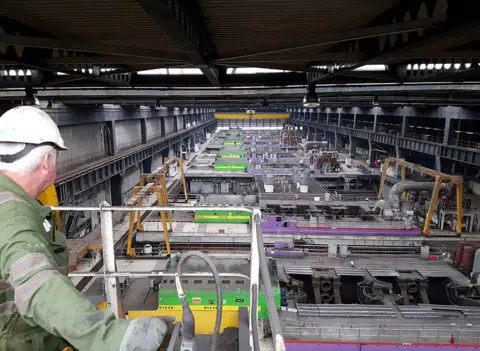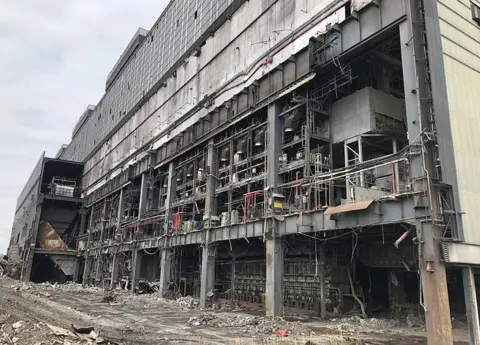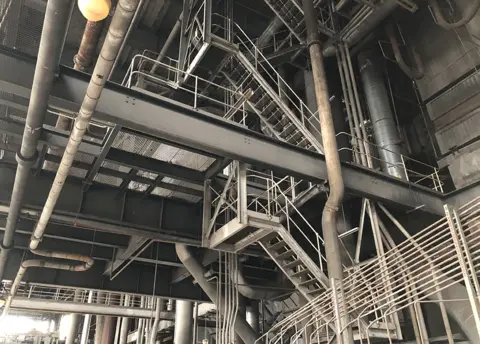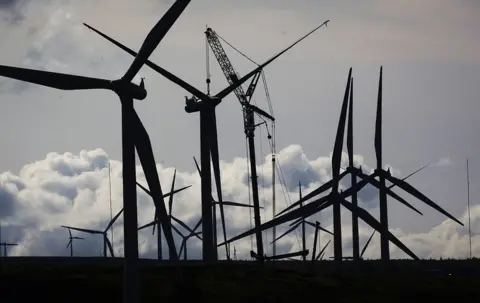Inside the once-mighty Longannet Power Station
 Scottish Power
Scottish PowerWhen it was fully opened in 1973, Longannet in Fife was Europe's biggest coal-fired power station. To keep it fuelling a quarter of Scottish homes it consumed 4.5 million tonnes of coal each year.
The power plant and the neighbouring Longannet Colliery, which supplied the fossil fuel, gave jobs to hundreds of people.
But now this giant's reign is at an end and its owners, Scottish Power, is taking it apart - but the process is not quick and it is not easy.
For decades Longannet produced more electricity than any other power station in Scotland and that meant it was also the country's biggest polluter.
With the shift to cleaner, greener energy the station was shut for good in March 2016.
So what's been happening at the site over the last three years? BBC Scotland got rare access to see what has been going on.
 BBC
BBC
Longannet took more than five years to build and it will take more than five years to demolish. In excess of 28,000 tonnes of material has been removed so far and Scottish Power say that the majority of that debris is being recycled or reused.
This power station was a creature of its time, built in the 1960s when coal was cheap and plentiful. But we now know that fossil fuels puts greenhouse gases into the atmosphere and that is changing our climate.
 BBC
BBC
Longannet was constructed on the banks of the Firth of Forth where it drew cooling water at a rate of 327,000 cubic metres per hour. That water was deposited back into the Forth, but along with it were emissions such as nitrogen oxides, carbon dioxide and sulphur dioxide.
Despite receiving European funding in the mid-1990s to retrofit the generating units to reduce emissions the shelf life of the power station would soon be up.
Eight controlled explosions have taken place on the site so far, including the blowing up of two boiler houses and a coal bunker.
The work will continue over the next 18 months and will include bringing down the west turbine hall and the iconic chimney.
 BBC
BBC
So if it is the end of the line for Longannet where is our electricity coming from now? Scottish Power claims to be the first "integrated energy company in the UK" to move completely from coal and gas generation to 100% renewable energy.
In January 2008 the UK's largest on-shore wind farm at Whitelee on Eaglesham Moor in East Renfrewshire began delivering power to the national grid.
The Scottish Power operated facility has 215 turbines and next year will feature a huge "super battery" to store the power which is generated.
 Danny Lawson
Danny Lawson

BBC Scotland News is running a season of climate change coverage across radio, TV, online and social media.
 BBC
BBCAll images are copyrighted.
